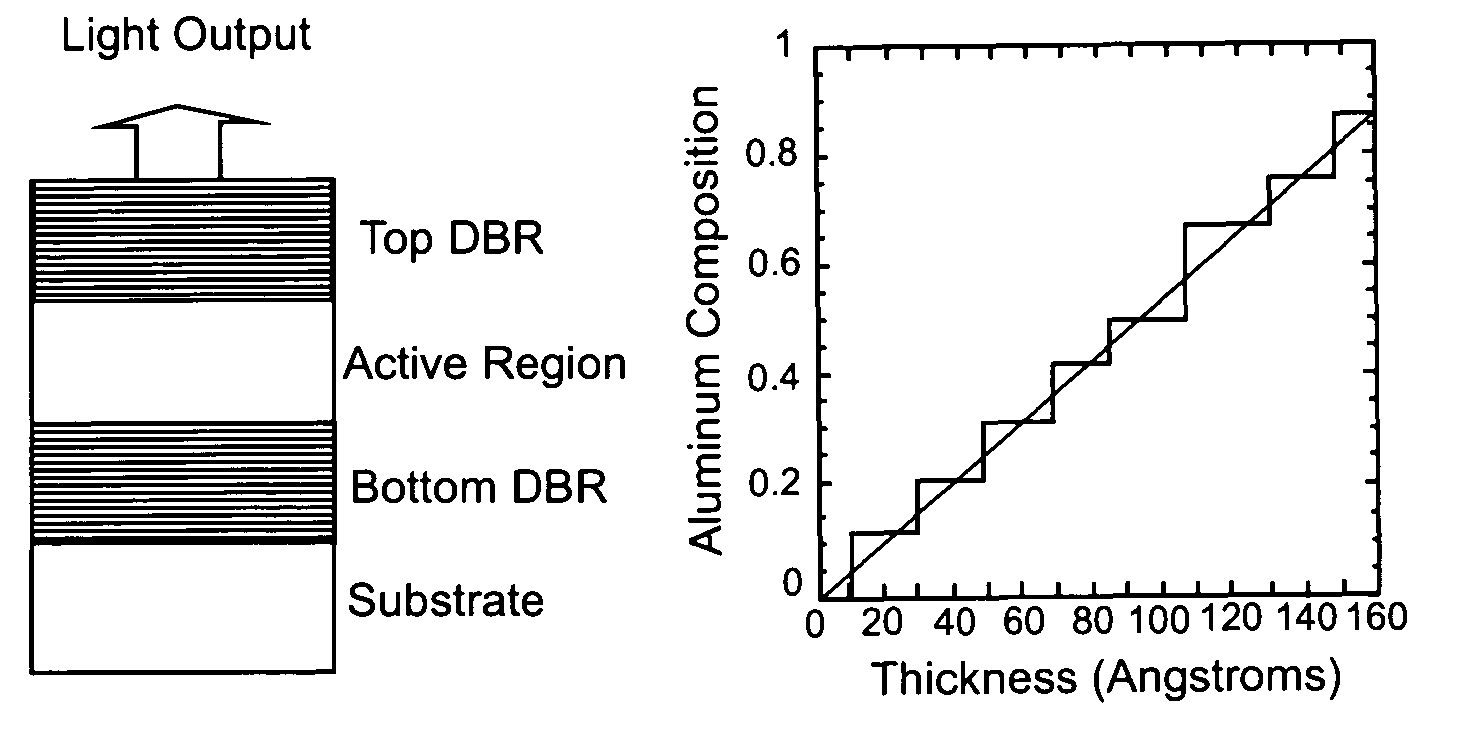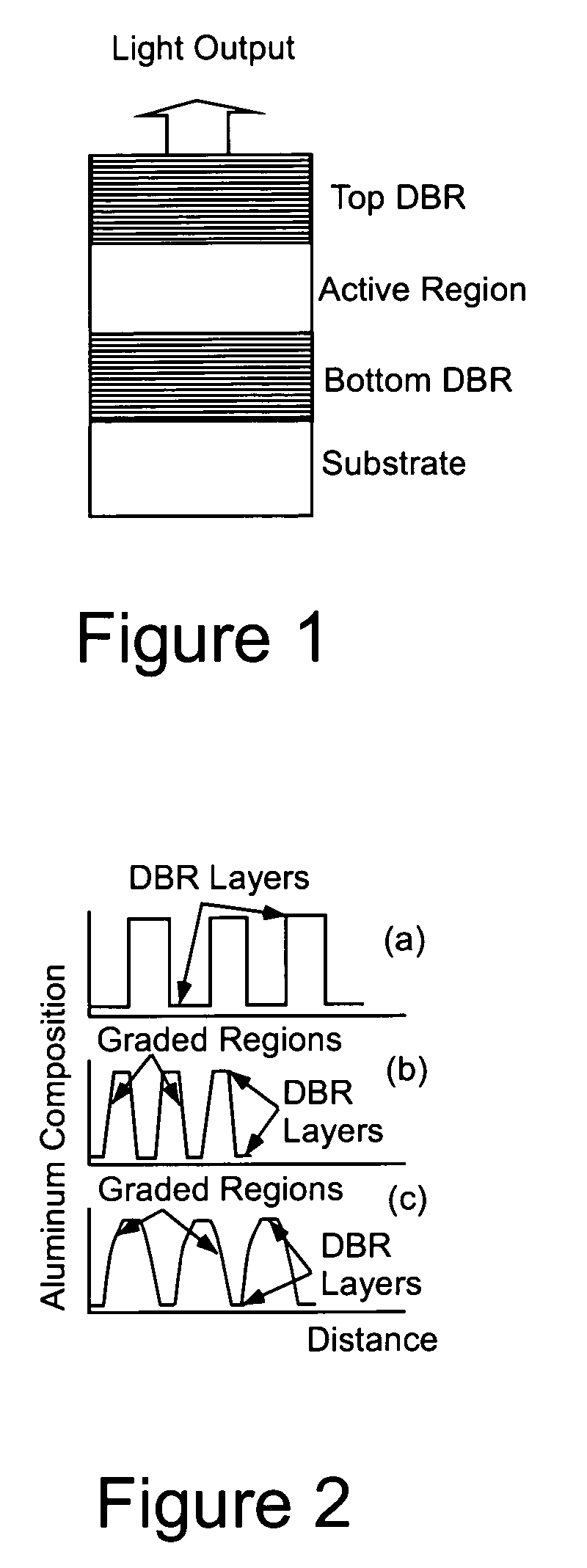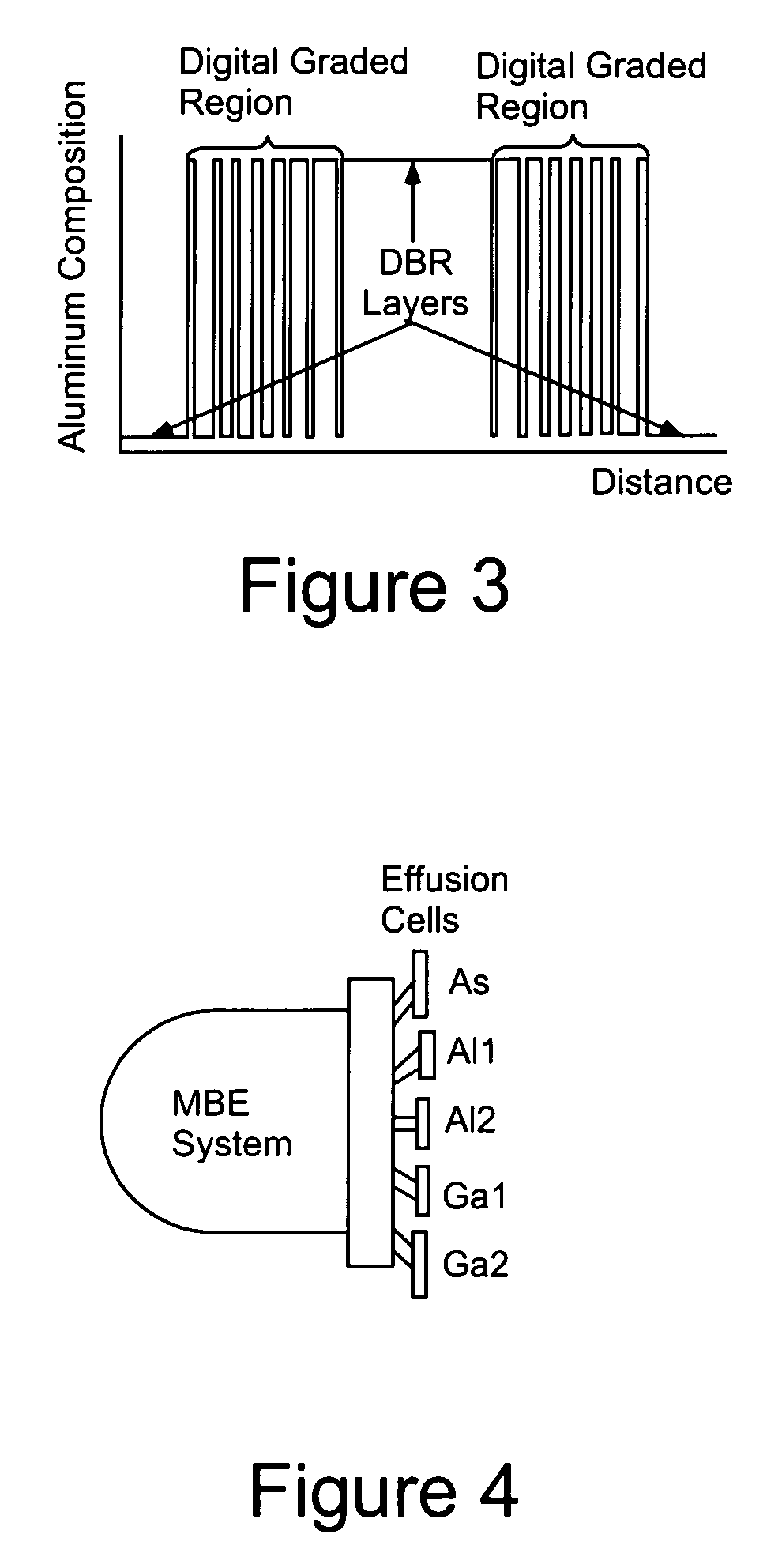Method for semiconductor compositional grading to realize low-resistance, distributed Bragg reflectors
a technology of distributed bragg reflectors and compositional grading, which is applied in the direction of semiconductor lasers, polycrystalline material growth, crystal growth process, etc., can solve the problems of reducing the optical performance of the mirror, presenting challenges, and affecting the stability of the semiconductor composition, so as to improve the optical and electrical characteristics
- Summary
- Abstract
- Description
- Claims
- Application Information
AI Technical Summary
Benefits of technology
Problems solved by technology
Method used
Image
Examples
Embodiment Construction
[0042]The proposed method for compositional grading employs a concept, involving the combination of thin, discrete, layers, to realize a compositional grade. However, this method differs from the digital alloy scheme described above in that this process employs small layers, each with a different AlxGa1-xAs composition, to approximate an analog compositional grading scheme. This method uses MBE and requires a system with multiple group-III elemental sources, as shown in FIG. 4. For the purposes of this explanation, the MBE system is configured with three Al sources and two Ga sources. However, other multi-source configurations can be used to realize this novel process. This method can be used in multiple material systems, but for the purposes of this description, the AlxGa1-xAs material system will be used. Using various combinations of the elemental Ga- and Al-sources, each with a different flux rate, different AlxGa1-xAs compositions can be realized for use in the graded DBR struc...
PUM
 Login to View More
Login to View More Abstract
Description
Claims
Application Information
 Login to View More
Login to View More - R&D
- Intellectual Property
- Life Sciences
- Materials
- Tech Scout
- Unparalleled Data Quality
- Higher Quality Content
- 60% Fewer Hallucinations
Browse by: Latest US Patents, China's latest patents, Technical Efficacy Thesaurus, Application Domain, Technology Topic, Popular Technical Reports.
© 2025 PatSnap. All rights reserved.Legal|Privacy policy|Modern Slavery Act Transparency Statement|Sitemap|About US| Contact US: help@patsnap.com



